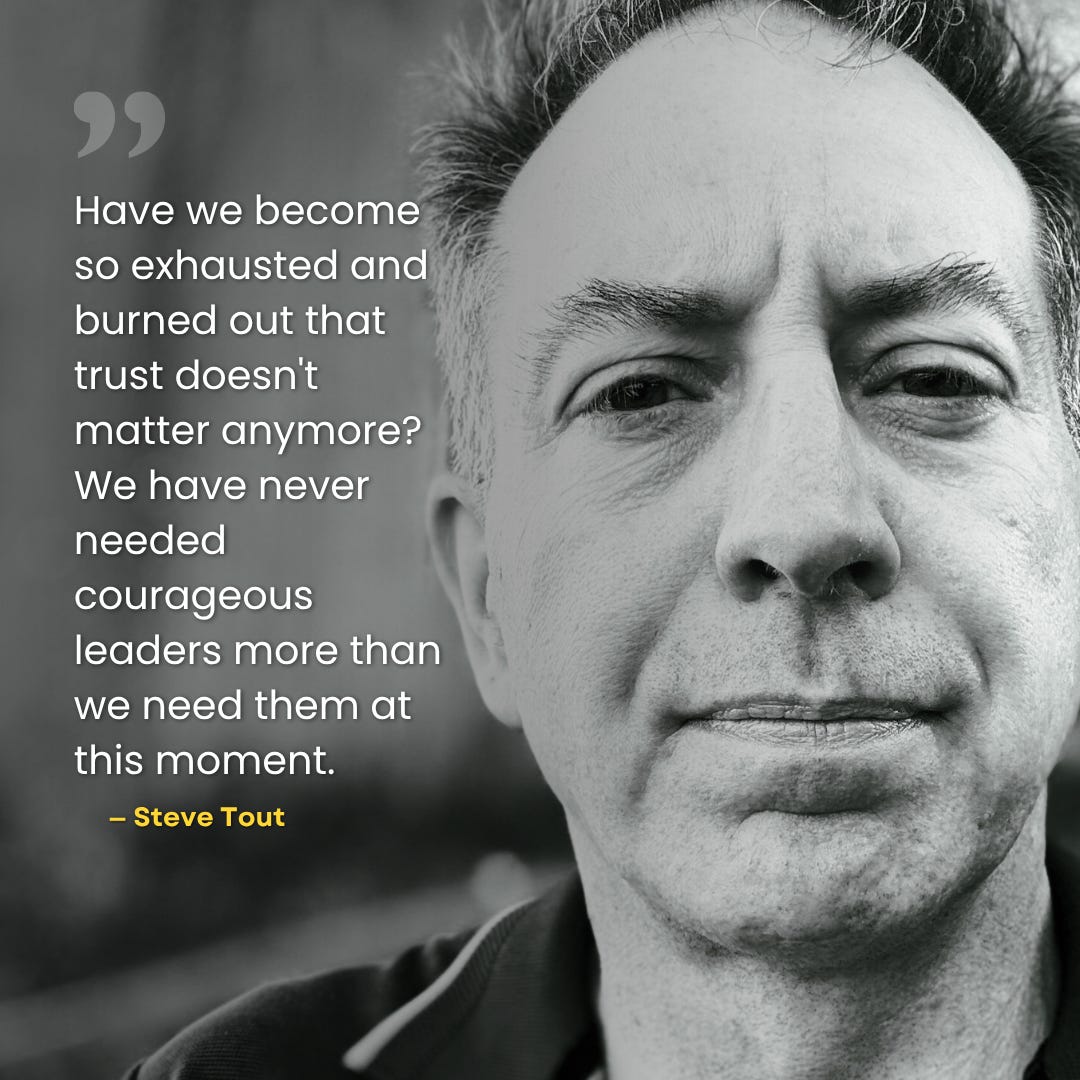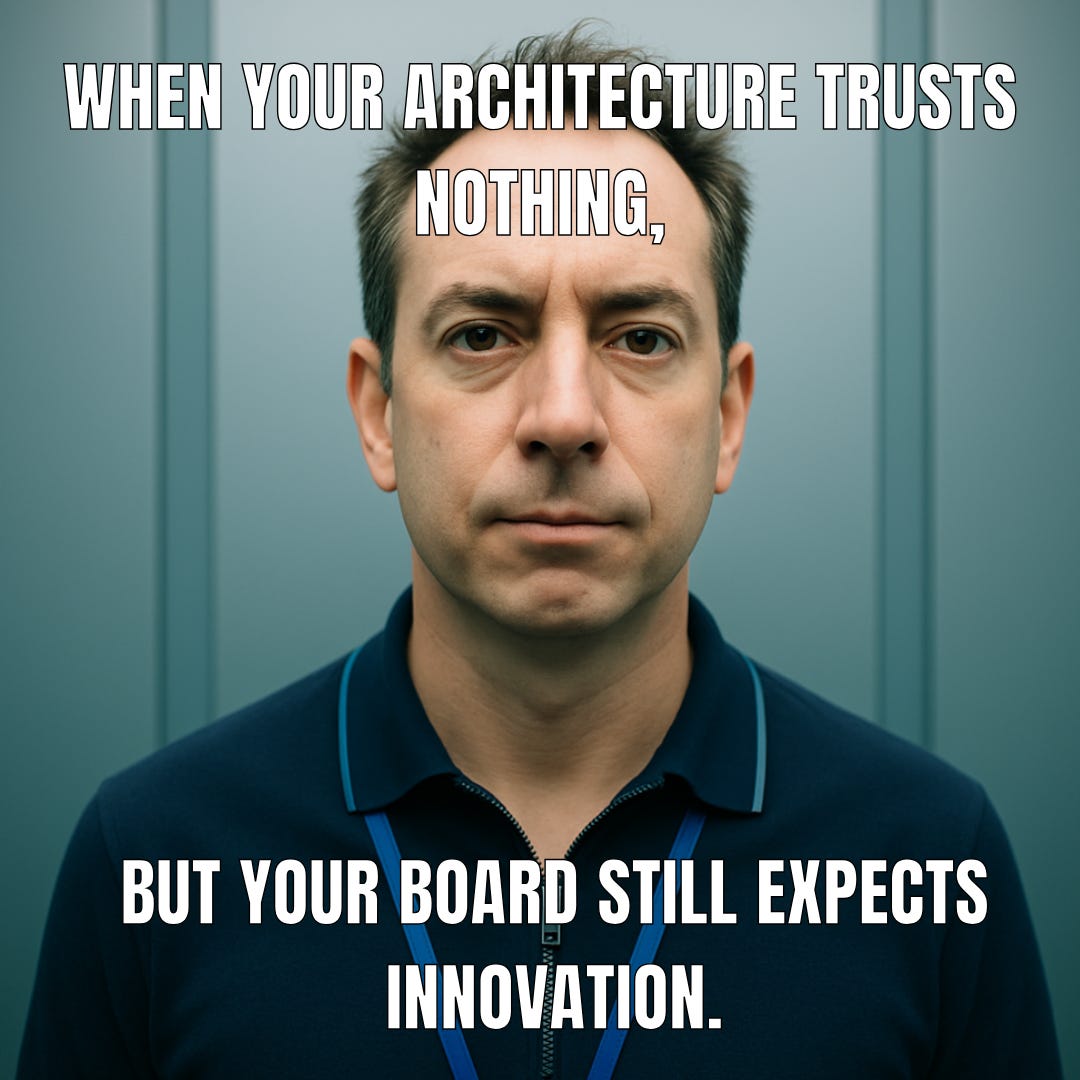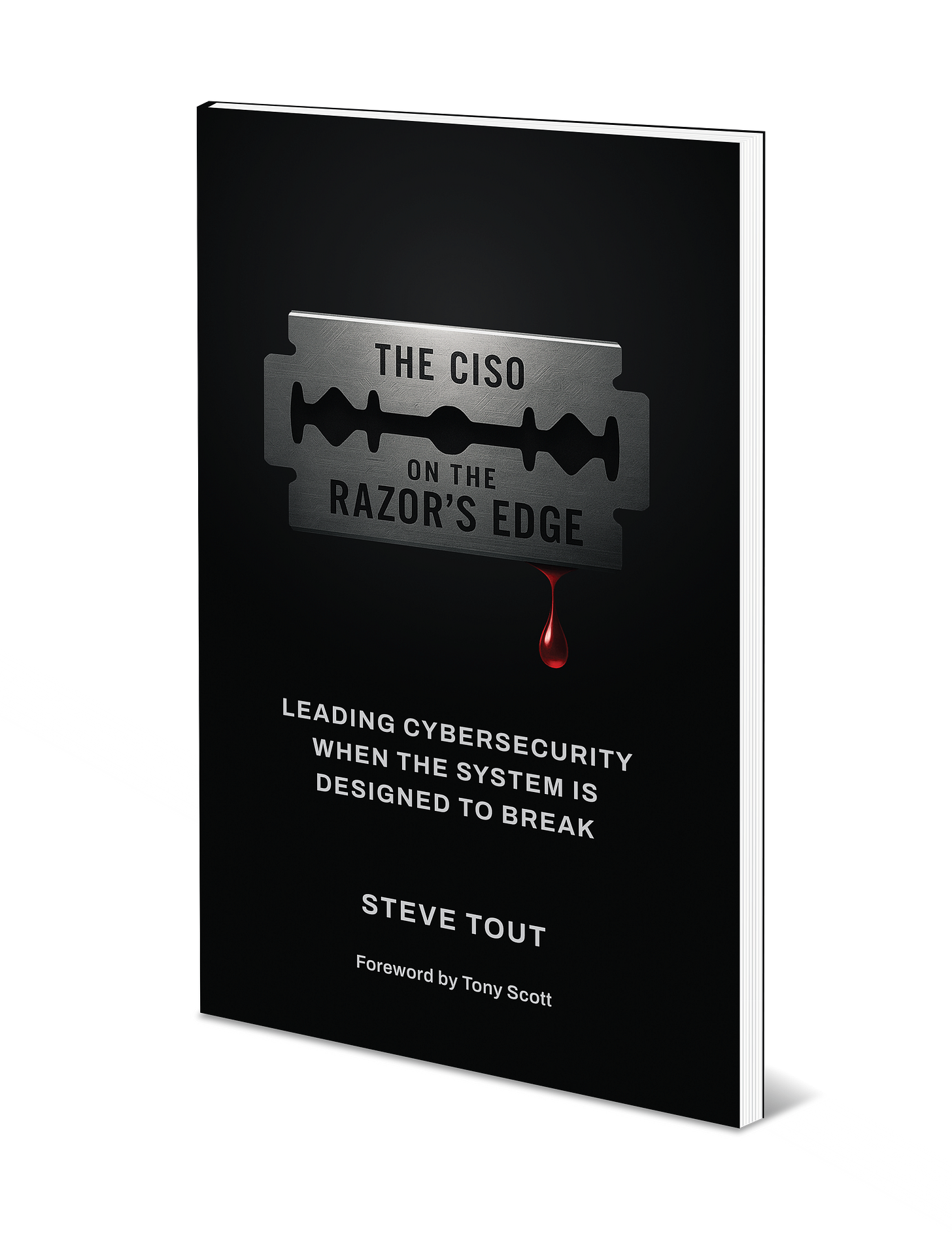The Zero Trust Paradox
When the Control Plane Forgets to Trust
A longer form post that explores what happens when a security philosophy designed to reduce risk begins to erode the very foundation it claims to protect—human trust?
Introduction: A Leadership Crisis in Disguise
I've been wrestling with something for months, and I suspect you have too—even if you haven't named it yet.
Zero Trust has swept through enterprise boardrooms like wildfire. Every CISO presentation includes it. Every vendor demo promises it. Every compliance framework demands it. We've accepted its logic wholesale: trust nothing, verify everything, assume breach. It's elegant in its simplicity and devastating in its clarity.
But here's what's keeping me awake: What if Zero Trust, while technically sound, is creating cultural debt faster than it reduces technical risk?
The philosophy that promised to secure our digital perimeters may be systematically dismantling the human ones. We've become so obsessed with eliminating trust as a security vulnerability that we've forgotten it remains the fundamental currency of leadership, innovation, and organizational resilience.
This isn't a technical problem—it's a leadership crisis masquerading as a security strategy.
The Illusion of "Complete" Zero Trust
Let's be honest about something the vendors won't tell you: complete Zero Trust implementation is a myth. Not because the technology isn't mature—it is. But because enterprise reality is messier than the architectural diagrams suggest.
Your organization likely runs across multiple clouds, integrates dozens of SaaS platforms, maintains legacy systems that predate modern identity protocols, and operates in regulatory environments that demand specific trust models. You have business partners with their own security postures, third-party integrations that require implicit trust, and operational necessities that force pragmatic compromises.
Every executive I know is drowning in the gap between Zero Trust theory and enterprise complexity. They're implementing policy engines that can't parse context, deploying identity solutions that don't integrate, and creating verification workflows that slow business to a crawl.
The result? Policy fatigue. Tool sprawl. Operational drag.
We're building systems so complex that only the systems themselves understand them—and we're calling this progress. Meanwhile, our teams spend more time proving they should have access to tools they need to do their jobs than actually doing those jobs.
This isn't Zero Trust. It's bureaucracy with better branding.
The Real Risk: Erosion of Human Trust
Here's the uncomfortable truth: while we've been busy eliminating trust from our technical architecture, we've accidentally eliminated it from our human one too.
We trust job titles—until they don't map to our identity systems. We trust contracts—until they contradict our policy engines. We trust automation—until it fails in ways we can't predict or explain. We trust outcomes—but only when they align with our dashboards.
What we don't trust anymore is judgment. Human intuition. The ability of smart people to make contextual decisions in ambiguous situations.
Zero Trust, applied blindly, trains teams to expect surveillance instead of support. It teaches them that their expertise is secondary to algorithmic verification, that their professional relationships are security risks, that their ability to adapt and innovate should be constrained by predetermined policy templates.
The most dangerous outcome isn't a security breach—it's the slow strangulation of the collaborative intelligence that makes organizations competitive in the first place.
Trust remains a leadership function, one that cannot be automated, systematized, or delegated to a compliance framework. When we forget this, we don't just lose efficiency—we lose the human capacity to respond to the unexpected, to innovate beyond our current constraints, to lead through genuine uncertainty.
The Paradox: Securing Without Trusting
So here's the question that haunts modern leadership: How do we scale trust when our entire security philosophy tells us not to trust?
The cognitive dissonance is exhausting. We preach trust as the currency of leadership while implementing systems that assume its absence. We demand agility and innovation while requiring pre-approval for every digital interaction. We talk about empowerment while building architecture that assumes incompetence.
This creates more than operational friction—it creates existential confusion for leaders and teams alike. When your security model contradicts your leadership philosophy, something has to give. Usually, it's trust.
Teams disengage when they realize the system doesn't trust them to do their jobs effectively. Leaders retreat into risk aversion when every decision requires navigating multiple verification layers. Innovation stalls when the cost of experimentation exceeds the organizational appetite for the unknown.
We've created an environment where following the process matters more than achieving the outcome, where compliance with policy supersedes performance against objectives, where the appearance of security becomes more important than actual resilience.
The result isn't just burnout—it's the systematic erosion of the institutional courage necessary to navigate genuine uncertainty.
Leaders Are the Real Control Plane
Here's what the security frameworks miss: systems don't create alignment—leaders do.
Your identity and access management platform can verify credentials, but it can't verify intentions. Your policy engine can enforce rules, but it can't enforce culture. Your monitoring systems can detect anomalies, but they can't detect the human dynamics that determine whether your organization will thrive or merely survive.
The paradox isn't just technical—it's cultural, emotional, and moral. We've built sophisticated systems to manage trust as a technical problem while ignoring trust as a leadership challenge.
Real security comes from teams that understand the mission, share accountability for outcomes, and possess the judgment to make good decisions under pressure. That kind of security can't be automated—it has to be cultivated through leadership that models trust while maintaining appropriate skepticism.
The most secure organizations aren't those with the most sophisticated verification systems—they're those with the clearest alignment between leadership behavior, cultural values, and operational reality. Compliance doesn't create trust. Judgment does.
A New Mandate: Lead with Strategic Trust
I'm not suggesting we abandon Zero Trust—the technical principles remain sound. But we need to balance it with something I'm calling Strategic Performance Intelligence: the conscious cultivation of trust as an organizational capability.
Here's the reframe: Trust is not an input you give blindly. It's a strategic output you create intentionally.
Strategic trust means building verification systems that enhance rather than replace human judgment. It means creating policies that provide guardrails, not straitjackets. It means designing workflows that accelerate good decisions rather than just preventing bad ones.
This requires leaders who understand that their primary job isn't managing risk—it's creating the conditions where smart people can do their best work within acceptable risk parameters. That's a fundamentally different mandate than what most security frameworks provide.
Strategic trust becomes an operating model: measurable, intentional, and people-first. You can track it, improve it, and scale it—but only if you recognize it as distinct from the technical trust models that Zero Trust eliminates.
Call to Action: Define What Comes Next
The future belongs to leaders who can navigate this paradox rather than pretend it doesn't exist. The organizations that will thrive are those that can implement sophisticated security controls while maintaining the human trust necessary for breakthrough performance.
So I'll ask you directly: Who will build the post-Zero Trust enterprise? Who will restore the alignment between security architecture and leadership philosophy? Who will rebuild trust as a competitive advantage rather than a security liability?
The choice is stark. You can keep narrating your role—explaining why the current systems make innovation difficult, why compliance requirements constrain performance, why the gap between security theory and business reality forces impossible compromises.
Or you can step up and lead what comes next.
The leaders who solve this paradox won't just secure their organizations—they'll define the next era of how humans and systems work together. They'll prove that trust and verification aren't opposites but complementary forces that, when balanced correctly, create something more powerful than either could achieve alone.
Zero Trust may be policy, but trust is still the work. And the ones who rebuild it—strategically, measurably, and courageously—will define what's next.
The question isn't whether you'll choose trust or security. It's whether you'll have the leadership courage to choose both.
The Work Continues
I explore this paradox—and many others—in my new book,
The CISO On The Razor’s Edge,
now available on Amazon and Barnes & Noble.
It’s a practical guide for cybersecurity leaders navigating systems built to break.
Not theory. Not hype. Just the work.
Because your frameworks matter.
But your leadership matters more.






